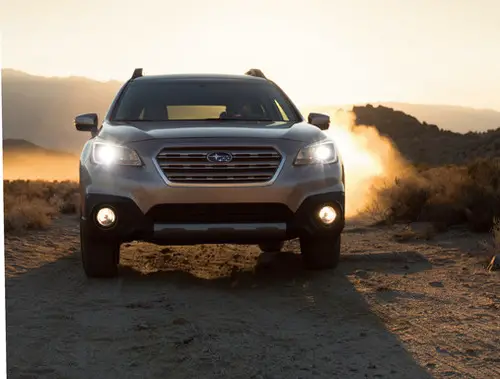Consumer Demand for Vehicle Stability and Safety Supports Market for All-wheel Drive Systems
 2015 Subaru Outback with All Wheel Drive |
MOUNTAIN VIEW, CA--June 17, 2014: The growing demand for vehicle stability, safety, and enhanced driving dynamics is fueling the adoption of all-wheel drive (AWD) systems, particularly among the C (i.e. BMW X1 and Acura RDX) and D vehicle segments (i.e. Volvo S60 and Ford Fusion). AWD systems enable the secondary axles to engage before slippage occurs and ensure the active distribution of torque between axles when turning corners, thus lending the vehicle optimal power and stability on the road. On-demand AWD also improves fuel-efficiency allowing vehicle original equipment manufacturers (OEMs) to counter the impact of soaring fuel prices on market growth.
New analysis from Frost & Sullivan, Analysis of the North American All-wheel Drive Systems Market, finds that the market – comprising of part-time, full-time, on-demand, combination, and electric AWD (eAWD) systems – earned revenue of $11.66 billion in 2013 and is estimated to reach $14.98 billion in 2020. Market penetration of AWD systems is likely to be nominal over the forecast period – increasing from 32 percent in 2013 to 37 percent in 2020. On-demand and combination AWD systems are expected to contribute 45 to 50 percent of total revenue and hold a market share of 50 to 52 percent in 2020.
For complimentary access to more information on this research, please visit: All Wheel Drive Research.
"The Detroit-3 OEMs currently dominate the AWD market, followed by Asian and German OEMs – who respectively hold 35 percent and 10 percent of the revenue potential," said Frost & Sullivan Automotive & Transportation Research Analyst Vikram Chandrasekar. "The Detroit-3 will continue to command the most revenue from AWD system sales and are likely to hold 50 percent of the market share through 2020."
However, the cost of sourcing AWD systems is expected to fall by only 5 to 10 percent in the coming decade. This comes as bad news to most OEMs, as they consider the high cost of sourcing front wheel drive (FWD)-based disconnect AWD systems a major factor that is holding them back. Although the implementation of disconnects on to the transfer-case within a target cost range has been feasible, OEMs and suppliers are struggling to adopt similar cost strategies for power transfer units on FWD-based AWD systems. Manufacturers need to overcome this obstacle as FWD-based architecture will soon be used for almost all passenger vehicles in North America.
"Rightsizing the driveline and disconnect driveline systems will be critical to the future of conventional AWD technology, even though this might threaten the growth of eAWD systems and restrict their use to a limited range of hybrid vehicle models," stated Chandrasekar. "OEMs should partner with AWD system suppliers to ensure effective rightsizing of driveline components based on customer usage profiles and expand their share in the North American market."
Analysis of the North American All-wheel Drive Systems Market is part of the Automotive & Transportation (Frost Automotive) Growth Partnership Service program. Frost & Sullivan's related studies include: Strategic Analysis of the North American Market for Tire Pressure Monitoring Systems, Strategic Analysis of the North American Small and Compact Sports Utility Vehicle Market, and Global Market Analysis for High-Speed (8/9/10) Transmissions. All studies included in subscriptions provide detailed market opportunities and industry trends evaluated following extensive interviews with market participants.


